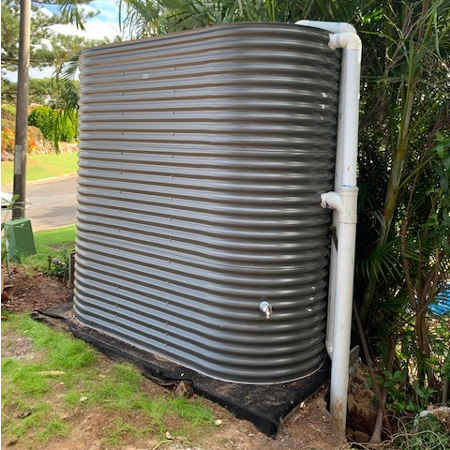Detention Tank | Retention Tanks
Detention tank and retention tanks play a vital role in managing stormwater runoff effectively. These tanks are designed to control and regulate the flow of stormwater to prevent erosion, infrastructure damage, and potential flooding.
Understanding Stormwater Detention Tanks
Many local councils require the installation of stormwater detention tanks to mitigate the impact of fast-flowing water runoff. These tanks temporarily detain water, slowing down its release through specially fitted valves. By releasing water at a controlled rate, stormwater detention tanks minimise environmental damage and help manage water runoff more efficiently.
In combination with retention tanks, which store harvested rainwater for various purposes, stormwater detention tanks ensure effective water management even during heavy storms. While retention tanks may overflow during intense rainfall, stormwater detention tanks release water gradually, maintaining capacity to detain runoff from future storms.
Customisable Solutions for Your Needs
At Select we offer customisable stormwater detention and retention tank solutions tailored to your specific requirements. Our tanks come in round or slimline shapes and can be constructed from premium grade 304 stainless steel, marine grade 316 stainless steel, or Aquaplate/Colorbond in a variety of colours.
We can build tanks of various sizes and configure them with the necessary fittings, including inlets, overflows, outlets, and detention valves, to suit your site conditions. Whether you need a standalone stormwater detention water tank, a rainwater retention tank, or a combination of both, we have the expertise to deliver.
If you’re considering a combined solution, such as a tank that serves both garden irrigation and stormwater detention purposes, we can design a system that meets your specific requirements. For example, a 5,000-litre tank can allocate 4,000 litres for regular use and reserve 1,000 litres to detain stormwater, releasing it at a controlled rate into the environment.
Our indicative pricing for popular tank sizes can be found on our water tank pricing page. Contact us today to discuss your stormwater management needs and explore our customisable solutions.
What are Stormwater Detention Tanks?
Understanding the Difference
If you’re constructing a new home, meeting local council requirements is crucial. Stormwater planning, including the installation of stormwater detention tanks, might be one such requirement, especially in areas prone to heavy rainfall.
Water Retention Tanks
Water tanks serve as reservoirs for water harvested from rooftops (rainwater) or hard surfaces on your property (stormwater). Unlike stormwater detention tanks, which detain water temporarily, retention tanks store water for various purposes instead of allowing it to drain immediately. Installing a water tank offers numerous benefits:
- Compliance with strict water restrictions in some areas
- Fulfilling council requirements in regions without access to town water services
- Harvesting rainwater for garden irrigation
- Refilling swimming pools without relying on mains water
- Convenient car washing without using buckets
- Avoiding chemicals found in treated water
- Saving on water bills by using harvested water
Stormwater Detention Tanks
New residential properties often incorporate onsite detention facilities, including stormwater detention water tanks, into their drainage systems. These tanks are designed to remain empty under normal circumstances but temporarily hold water during rainfall events. The key feature of stormwater detention tanks is their ability to release water slowly over time through specially fitted valves.
There are two main options for implementing a stormwater detention water tank solution:
- Separate Tanks: Install two distinct tanks—one for rainwater harvesting and another for stormwater detention.
- Dual-Use System: Utilise a specialised dual-use water retention/detention system.
While rainwater tanks might seem sufficient for managing stormwater, they can quickly fill up during heavy downpours. Stormwater detention water tanks address this issue by ensuring space remains available for detaining water from subsequent rainfall events. The gradual release of water from these tanks into drains helps mitigate water runoff, reducing the risk of flooding in the local area.
Detention Tank | Retention Tanks
Frequently Asked Questions
What is a detention tank?
A detention water tank, also known as a retention tank, serves as an artificial flow-control structure designed to temporarily contain stormwater and wastewater. These tanks are typically integrated into the sewer network system, either at wastewater treatment plants or within industrial facilities.
What is the difference between a detention tank and a water tank?
Stormwater detention tanks are intended to remain empty, except during periods of rainfall and for a short time thereafter. Unlike normal rainwater tanks, the distinguishing feature of a stormwater detention water tank is that it is specially fitted with a valve to slowly release water over time.
How do detention tanks differ from water tanks?
Do I need a detention tank?
What is a stormwater detention tank?
How do detention water tanks work?
A detention tank works by temporarily storing stormwater runoff during periods of heavy rainfall. When rainwater flows into the tank, it is held back for a limited time to prevent overwhelming the drainage system.
The tank is designed with a controlled outlet, such as a valve or pipe, which regulates the release of water at a slower rate than it enters.
This controlled release helps prevent flooding downstream and reduces the impact of stormwater runoff on the surrounding environment. Once the rainfall subsides, the stored water is gradually released from the detention tank into the drainage system or nearby water bodies.


